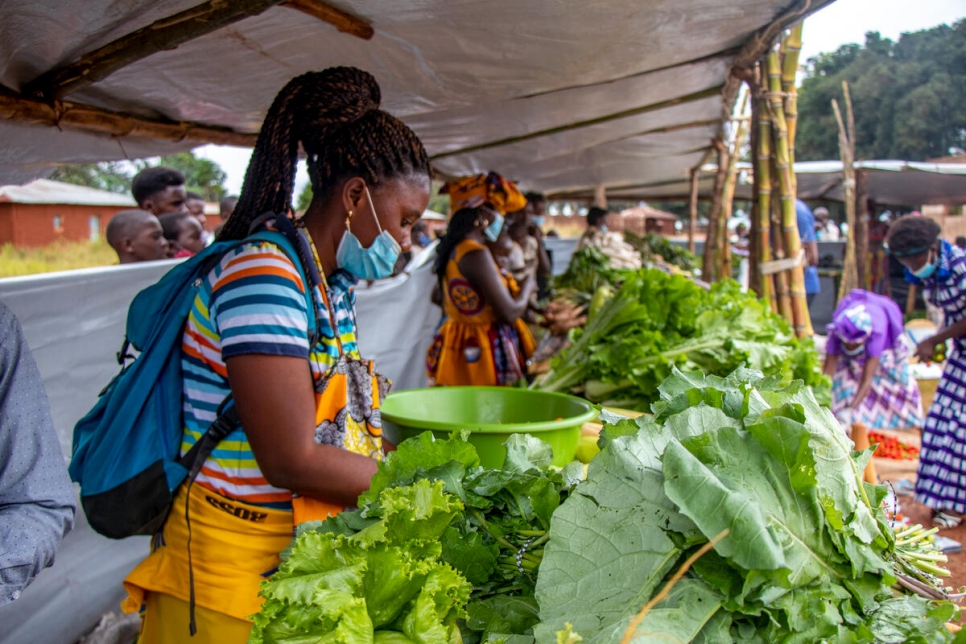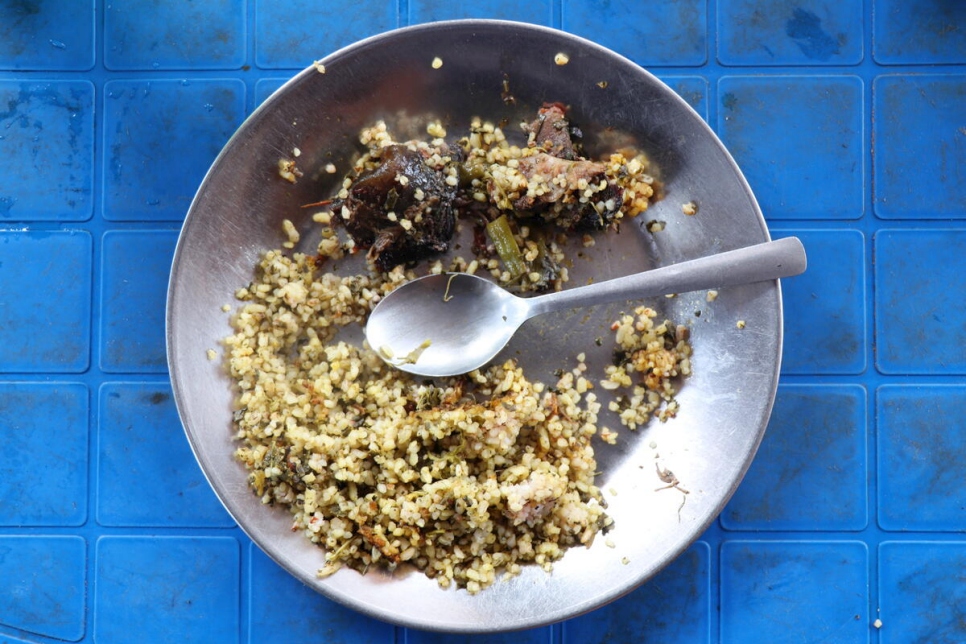'All over the province, people want to buy our rice'
A group of refugee women are growing rice on a large scale, becoming the largest rice producers in Angola's Lunda Norte province.
Congolese refugee farmer Antoinette picks rice in her farm in Lovua settlement, Angola
© UNHCR/Omotola Akindipe
It takes more than an hour on foot to traverse the muddy terrain that leads to Antoinette’s expansive rice farm in Chamassuia, a local village about five kilometres from Lôvua settlement in Angola’s Lunda Norte province.
Nestled between the village and a local river at the base of a hill, the rice farm stretches out over some 10 hectares of land, a sight to behold.
“Rice is my basic food, it’s what we used to eat back home in Maniema,” says Antoinette, 55, who fled the Democratic Republic of the Congo (DRC) four years ago. “That’s why I wanted to cultivate it here in Lôvua.”
Angola hosts about 56,000 refugees, mostly from the DRC, with some 6,700 Congolese refugees like Antoinette living in Lôvua settlement. Here, she has a large plot on which she has constructed four homes for her extended family of 16, including eight children.
“Rice is my basic food, it’s what we used to eat back home.”
Antoinette, also known as ‘Mama Antho’, runs an agricultural association with some 30 refugee women who work on farms in and outside the settlement. Many of them have brought their agricultural expertise to a region that is not known for farming. The women produce between 500 to 600 kilograms of rice per harvest, making them the largest rice producers in the province.
They also grow vegetables like potatoes, tomatoes, eggplants, carrots, onions, lettuce, okra and cassava and tend to their own kitchen gardens, next to their homes in the settlement, when they are not out working together on the large farms.
As the terrain in the settlement was not suitable for creating rice paddies, Antoinette came up with a plan and approached several traditional leaders or ‘sobas’ who oversee territories near the settlement.
“We have been here since 2017 and during this time, we have created good relations with the host community,” she says. “We negotiated for access to some farmland near the river that we turned into rice paddies. All over the province, people are calling me because they want to buy our rice!”
The rice farm has contributed significantly to peaceful coexistence between refugees and local Angolans living in villages nearby. They work together with the refugee farmers to till and maintain the farms and, as a result, have learned how to cultivate rice in a region mainly known for cassava.
“We also benefit and our people can learn from them.”
Soba Faustino, the traditional leader of Chamassuia, is pleased with the rice cultivation in his village.
“We would like humanitarian agencies to provide more assistance but it’s also good that refugees cultivate here as we also benefit and our people can learn from them,” he explains.
He adds that many locals have seen an increase in their household income as they get employment on the rice farms. The alternative source of income also reduces the need for them to cut down trees for firewood and charcoal, reducing the destruction of the environment.
Mama Antho also believes it’s important to not depend solely on food assistance from aid agencies.
“We need to supplement the food that we receive because it’s not enough. We also need to sell produce so that we can run our businesses and support our families,” she adds as she proudly shows off the extent of the rice farm, one of two in Chamassuia.
UNHCR regularly supports refugee farmers with assorted seeds, agricultural tools, work boots, fertilizer and even farm animals like chickens and pigs. Some 60 farmers from three local communities near the settlement – Muamucombo, Naginga and Sacatangui – receive regular agricultural trainings through a farming project led by livelihoods partner Ajuda de Desenvolvimento de Povo para Povo (ADPP).
Robert Ahebwa, UNHCR’s Associate Livelihood Officer, believes that the refugees’ agricultural knowledge and experience can help the local community improve their produce.
“We always encourage skill sharing as it promotes peaceful coexistence. Farmers easily adopt better farming practices when they learn from their fellow farmers,” he explains.
He adds that some refugees already know how to farm smart, using modern methods to increase the quality and quantity of their crops. If the local community can follow a similar approach, they improve their own food security.
Last May, the Municipality of Lôvua held an agricultural fair to celebrate its sixth anniversary as a municipality, where the authorities expressed their commitment to continue partnering with UNHCR to scale up rice production in the province.





